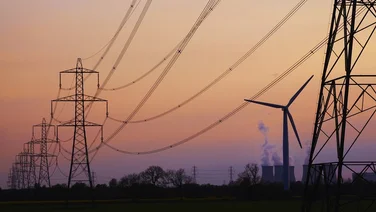Energy regulator Ofgem announced a new price cap on Thursday of £1,971. This is the highest ever rise for UK households, and will come into force on 1st April 2022.
This is a 54% increase over the previous average of £1,277 spent on bills this winter, sparking fear that up to two million more households in the UK will fall into fuel poverty. Energy bills are set to increase by a further £400 or so in the following winter, after the next price cap increase in six months’ time.

The announcement from Ofgem came earlier than expected, with the UK government poised to introduce a possible £200 ‘safety net’ measure to ease the financial blow to some households. Rishi Sunak has said that 80% of homes will get a £150 discount on their council tax, whilst all domestic electricity customers will get £200 off their energy bills in October.
Taking effect from April 1st, the price cap rise is a direct result of the ongoing energy crisis. In short, energy suppliers have had to buy gas at far higher prices than they normally would. Combined with UK tariffs that prevent suppliers charging over a certain amount, this has meant energy providers have been selling gas at a loss.
Nearly 30 energy suppliers (over half of all suppliers in the country) in the UK have gone bust because of this, including some of the biggest hitters in the industry. The price cap rise will help alleviate some of the strain on the surviving energy suppliers, as they can now pass a greater portion of the costs onto customers.
As the largest ever hike for UK energy bills, it was initially expected that Ofgem would announce this on the coming Monday. Speculation surrounding the maximum energy tariff however, has clearly led Ofgem to believe they needed to make the announcement earlier, likely to calm the growing concern.
Who will be affected?
Those affected by the price hike include any UK citizen who is currently on either a standard variable tariff, those on a fixed deal that has come to an end (or is set to), and people who were moved to a new supplier after their old one collapsed.
People on prepayment meters, numbering around 4.5 million, will also be affected by a separate cap. This will see the average annual bill rise to £1,309 for people in this category using a typical amount of gas and electricity.
Businesses are concerned about the price cap rise too, with big supermarkets such as Iceland coming out to say they fear they’d have to “bear the brunt” of the increase.
Richard Walker, the managing director of Iceland, said that “2022 is probably set to be the hardest year ever for many UK families,” as the impact of the price cap rise reduces spending power. The obvious effect of this is that supermarkets and many other businesses will see lower spending in their shops.
What has caused the price hike?
The UK’s wholesale energy markets have reached record highs in the last few months, in the wake of a global surge in demand for gas. Storage facilities holding gas had all but depleted following a cold winter, in addition to a post-lockdown increase in Asia’s gas consumption.
Tensions arising from the ongoing Russia-Ukraine standoff haven’t helped either. With countries throughout Europe concerned at the possibility of Russia stopping or limiting their gas exports, prices for gas have risen as a result. If Russia were to stop exports, countries would need to turn elsewhere for their gas.
The expected rise of the price cap in October 2022 makes it clear 2022 will be a very difficult year for many.






